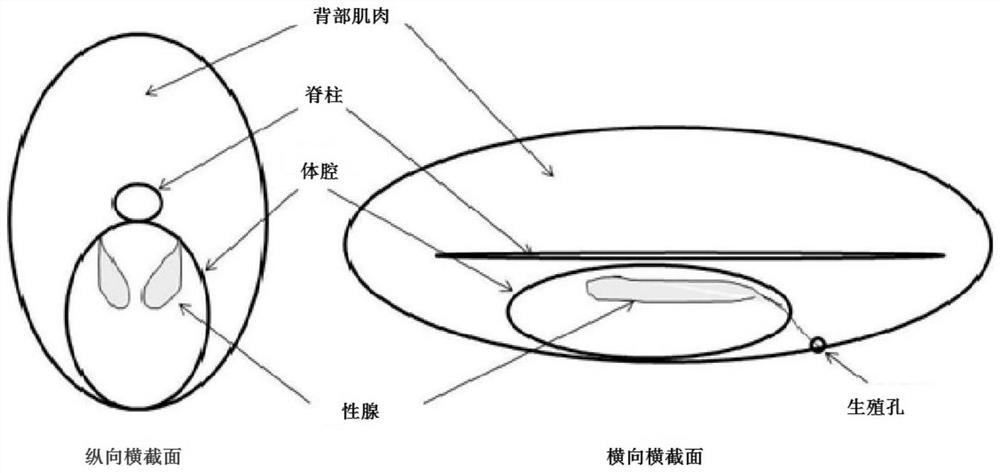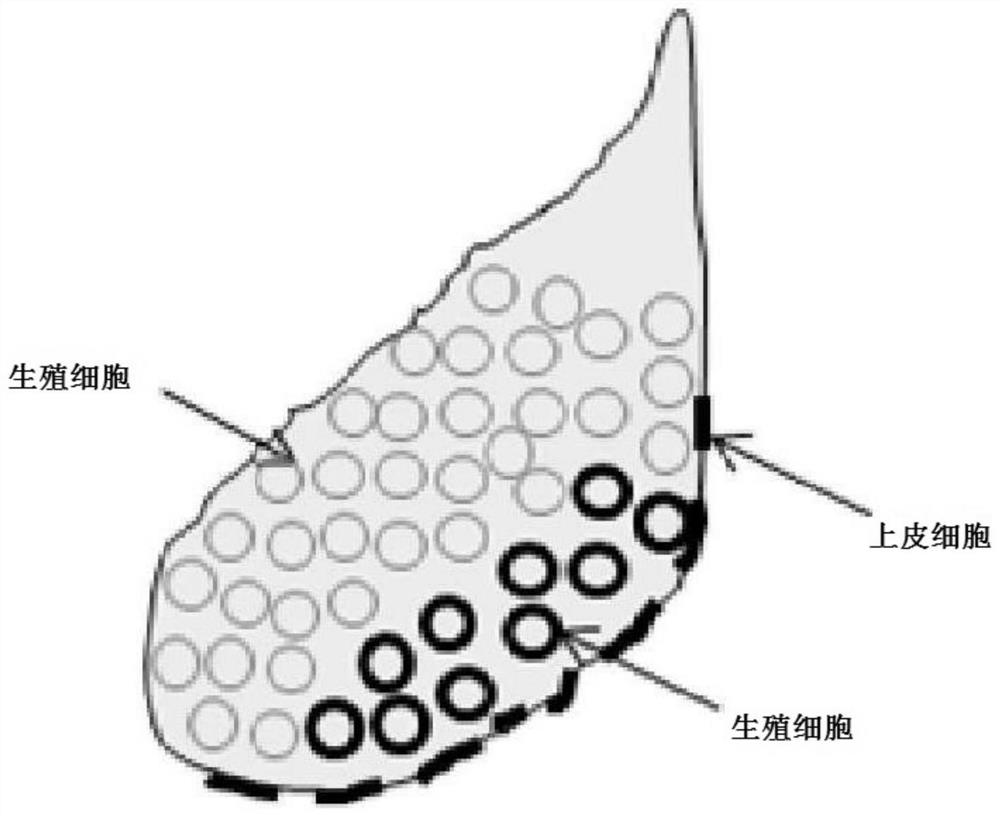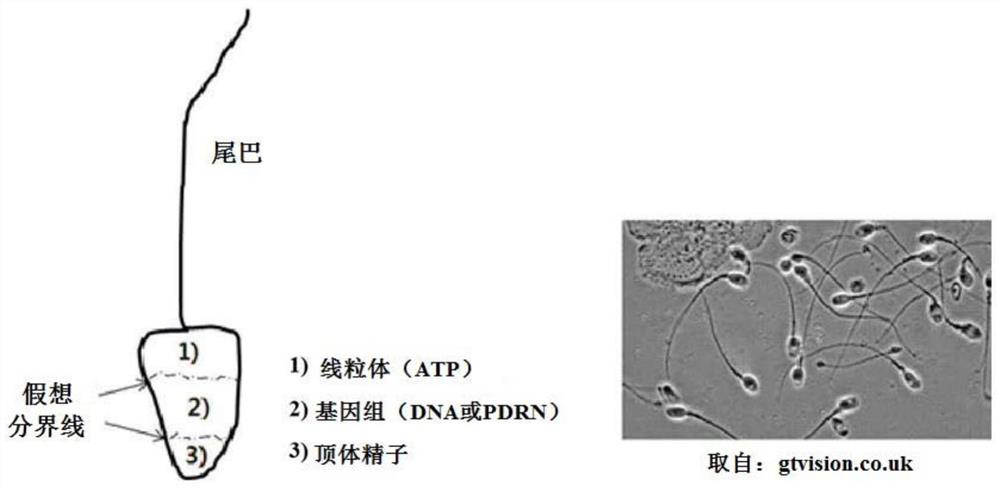Method for extracting high-purity polydeoxyribonucleotide from salmon testis
A polydeoxyribonucleotide, high-purity technology, used in cell dissociation methods, chemical instruments and methods, biochemical equipment and methods, etc., can solve problems not introduced, and achieve cost-effective and economically feasible results
- Summary
- Abstract
- Description
- Claims
- Application Information
AI Technical Summary
Problems solved by technology
Method used
Image
Examples
Embodiment 1
[0061] Example 1 Sperm motility (%) in different regions of salmon testis before and after hCG treatment
[0062] Harvest the immature regions by cutting the testes of male salmon (except for region D where semen leaks, see Figure 4 ). Before treatment with hCG, sperm motility from testicular regions A and B was almost zero, sperm motility was as low as 1% in testicular region C, and sperm motility was 100% in mature semen. After hCG treatment, sperm motility in testicular region A increased to about 3%, while sperm motility in testicular region B and C increased to 35% and 89%, respectively. These results lead to the conclusion that the use of testicular region C, which accounts for 45% of the total testis weight, to produce mature spermatozoa allows the preparation of high-purity PDRN with few impurities (see Figure 4 and Table 1).
[0063] The motility of sperm in different areas of salmon testis and the weight ratio (%) of testis area before and after the hCG of table...
Embodiment 2
[0076] The sperm motility (%) of salmon testis region C under different hCG treatment conditions of embodiment 2
[0077] The testis region C of male river salmon was diluted with buffer solution and treated with different concentrations of hCG. Sperm motility was very low (2%) when zone C was untreated, steadily increased with hCG concentrations up to 50 IU / g, and ≥82% when treated with hCG concentrations of 50-200 IU / g (Table 6).
[0078] Table 6 Sperm motility (%) in testis region C of river salmon caught 2 km upstream of the estuary in October when treated with different concentrations of hCG (IU / g testis)
[0079]
[0080] *Measured 10 minutes after hCG treatment
[0081] The changes in sperm motility over time after treatment with the concentrations of hCG shown in Table 6 were compared. There was no difference in sperm motility over time in the untreated control group. Sperm motility of the group treated with 25 IU / g testis increased to a maximum of 73% 1 hour afte...
Embodiment 3
[0084] Example 3 Treat the PDRN extraction rate (%) of testis region C with hCG under different conditions
[0085] In this example, 10 g of testicular region C of male river salmon was used. For comparison, 30 mL of semen typically extracted from male river salmon was used (Table 8). The testicular area was treated with hCG at concentrations of 50 and 100 IU / g testis. After hCG treatment, ≥80% of the top layer was collected and defined as the supernatant.
[0086] The dry weight of the untreated group was 5.10 g, which was smaller than that of the hCG-treated group and larger than that of semen (2.89 g). The dry weight of the untreated group was greater than that of the semen, which is thought to be due to the presence of heavier trophoblasts. The dry weight of the hCG-treated group was greater than that of the untreated group, which is thought to be because hCG treatment stimulates meiosis of spermatogonia into spermatids, resulting in an increase in cell number. The low...
PUM
 Login to View More
Login to View More Abstract
Description
Claims
Application Information
 Login to View More
Login to View More - R&D
- Intellectual Property
- Life Sciences
- Materials
- Tech Scout
- Unparalleled Data Quality
- Higher Quality Content
- 60% Fewer Hallucinations
Browse by: Latest US Patents, China's latest patents, Technical Efficacy Thesaurus, Application Domain, Technology Topic, Popular Technical Reports.
© 2025 PatSnap. All rights reserved.Legal|Privacy policy|Modern Slavery Act Transparency Statement|Sitemap|About US| Contact US: help@patsnap.com



